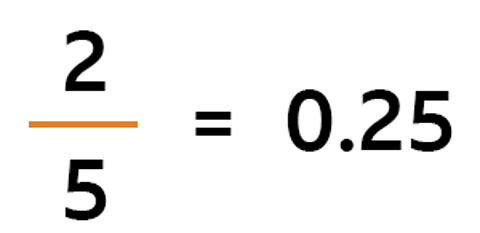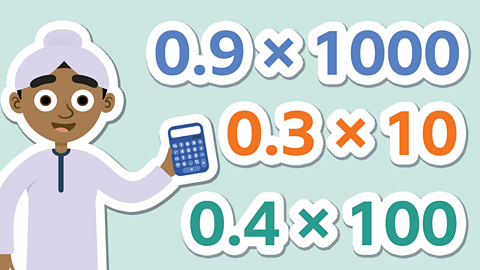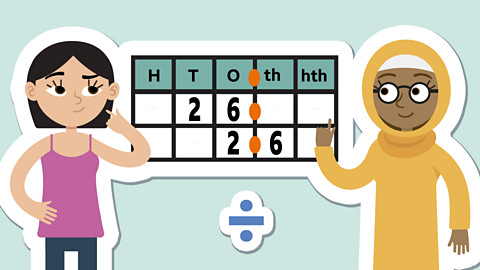Dividing numbers with a remainder

Sometimes when we divide two numbers we can get a remainder.
There are different ways of representing the answer to a division question that has a remainder.
First, though, letâs start by looking at the idea that for every fraction there is a decimal that has the same value
For example, we could say that œ is equivalent to 0.5 or that one tenth is equivalent to 0.1.

Example 1
Take a look at this equation below. Is it true or false?

This is incorrect!
Two fifths can also be written as four tenths so the answer should be 0.4.
Any fraction can be changed into an equivalent decimal by dividing the numerator by the denominator.So, with the fraction two fifths, we would divide 2 by 5.
That sounds a bit âweirdâ because you might think that 5 cannot go into 2 â but it can!

Example 2

Twenty three is NOT a multiple of six, so we will know that the answer will not be a whole number (integer).
Three different pupils respond with whiteboards:

The first two answers are correct but the third answer is wrong â why?

This is another example of a recurring decimal.
We can just write:

(with the dot above the digit three only).
The answer would be 3.83 (rounded to two decimal places).
Example 3
Letâs change one ninth into an equivalent decimal!

So one ninth is equivalent to zero point one recurring.

Could you write down the decimal equivalent two ninths? What about two thirds?
Two ninths = 2 x one ninth = 2 x 0.111 ⊠= 0.222 ⊠or zero point two recurring.
Two thirds = six ninths = 6 x one ninth = 6 x 0.111 ⊠= 0.666 ⊠or zero point six recurring.
Example 4
Fatima and six of her friends agree to share the cost of some party food they have bought to celebrate a special occasion!
The total cost of the food is ÂŁ45

Fatima is correct when she says that this means they each need to pay just over ÂŁ6.42 each â in fact ÂŁ6.43 would be JUST OK!
We could even check this out:

Activity
Quiz
NEW! Play Guardians: Defenders of Mathematica - the Halloween update. gameNEW! Play Guardians: Defenders of Mathematica - the Halloween update
Experience Mathematica as youâve never seen it before, with all-new backgrounds and costumes for Halloween. Available for a limited time only. Use your maths skills to save the day before it's too late!

More on Multiplying and dividing
Find out more by working through a topic
- count32 of 36

- count33 of 36

- count34 of 36

- count35 of 36
